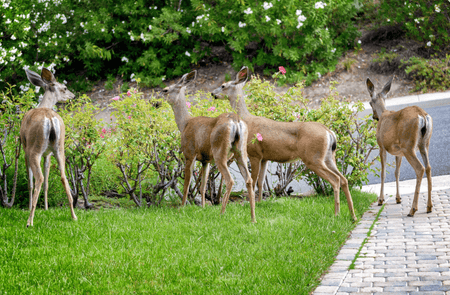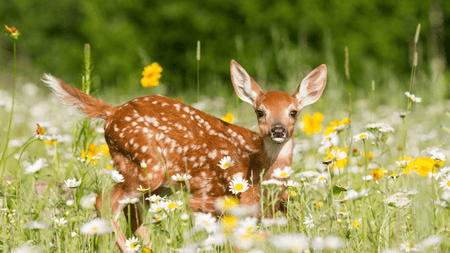Creating a Thriving Habitat: Supporting Frogs and Wildlife with a Native Plant Garden at Home

Why support frogs?
Creating a frog habitat with native plants and a water source in your garden is a rewarding way to support local wildlife and enhance your natural space. Native frogs play a crucial role in maintaining biodiversity by controlling insect populations and serving as a vital food source for other animals. Because frogs are very susceptible to pollution and habitat loss, they are considered indicator species, reflecting the health of the overall ecosystem. Unfortunately frog are rapidly disappearing all around the globe due to human activity. By supporting frogs in your garden with native plants, you contribute to restoring a healthy local ecosystem.

Photo by Mindi Vervaecke
Frogs vs Toads
Frogs are amphibians. They are broken into three main groups based on the habitat they live in and their adaptations to that habitat: the true frogs, the tree frogs and the toads.
True frogs generally live in wet environments such a ponds, creeks or wet meadows and are adapted for swimming and leaping. Tree frogs live up in the vegetation and are adapted for climbing and leaping. Many even have sticky toes to aid in climbing. Toads generally live on land and have bumpier, drier skin and shorter legs adapted more for hopping on land and digging into the ground than for swimming or climbing. (Yes, that means that all toads are frogs, but not all frogs are toads!)
One thing that all frog species rely on is water. That’s because as amphibians, they must lay their eggs in water. The eggs hatching into fully aquatic tadpoles that later go through metamorphasis to grow lungs and legs and emerge from the water as adults. Though tree frogs and toads move away from the water when they become adults, they still must return each year to mate and lay eggs.
Guide to Helping Native Frogs at Home In Your Garden
Here's a step-by-step guide to help you get started.
Research Native Frog Species
Start by researching the native frog species that are found in your region. Different frog species have specific habitat requirements, and knowing which ones are native to your area will help you tailor your garden to their needs.
Reduce Your Lawn: Choose Native Plants
Reduce the size or your lawn–or get rid of it altogether–and add more native plants. Frogs are exclusively carnivorous and don’t eat plants, but they still benefit from a garden filled with natives. Native plants support exponentially more insects than non-natives do, and insects are the main food for food.
Plant native aquatic and wetland plants in and around your pond to provide hiding places for frogs and to attract the insects that frogs eat. Your plants will also help keep water quality high by absorbing excess nutrients and preventing excessive algae from growing. Our native plant suggestions to create frog-friendly habitats are linked below!
Select a variety of native plants that are well-suited to your climate and soil conditions. Native plants provide food and shelter for frogs and other wildlife, and they also attract insects, which are a vital food source for many frog species. Include a mix of ground cover, shrubs, and trees to create diverse layers in your garden.
Create a Water Source
Frogs need a reliable water source for breeding. Many species have moist skin and must keep wet. If space permits, consider adding a small pond or water feature. A pond with gently sloping edges will allow frogs to enter and exit easily. Ensure the pond has both sunny and shaded areas to accommodate different frog preferences. If space is limited, a simple shallow dish or birdbath can also work as a water source for smaller frog species. We’ve got some creative upcycled water sources listed below.
Safety first: Avoid Chemicals, Pesticides
Refrain from using pesticides and fertilizers in your garden. Frogs have sensitive skin that easily absorb pollutants from the air and water where they live. These chemicals can kill frogs or cause deformities. Embrace organic gardening techniques natural pest control methods and let nature find its balance.
Frog-Friendly Abodes
Place logs, stones, and other natural elements around the water source and throughout the garden. These provide basking spots for frogs to soak up the sun and regulate their body temperature as well as places to hide under when they get too hot or dry or to escape predators
You can also create or buy a toad abode - a small ceramic house for toads. To create one yourself, turn a ceramic flower pot upside down and, if it does not already have a toad-sized crack or hole in the side for an entrance, prop it up with a rock so the toad can get in and out. It is better not to have a floor in your toad abode because toads like to dig. Place your toad abode in a shady spot near a water source, such as a small pond or even larger saucer of water. Get step-by-step directions for making a toad abode with your children.
Encourage Insects and Other Wildlife
Insects are a crucial food source for frogs, so encourage their presence in your garden by planting native flowers that attract pollinators and avoiding pesticides.. You can also install insect hotels or leave patches of your garden wild to provide habitat for insects.
Native Plants for Frog-Friendly Habitat

To support frogs in your garden, it's essential to choose native plants that provide food, cover for these amphibians.
Native plants have co-evolved with local wildlife, making them an excellent choice for creating a thriving frog-friendly environment.
Here are some native plants that can help support frogs:
- Frogfruit (Phyla nodiflora): This low-growing ground cover provides shelter for small frogs and attracts insects, which are a vital food source for many frog species.
- Pickerelweed (Pontederia cordata): Pickerelweed is a native aquatic plant that grows near the water's edge. It offers cover and shade for frogs and provides habitat for insects and other aquatic creatures.
- Cardinal Flower (Lobelia cardinalis): The vibrant red flowers of cardinal flower that naturally grows in wet soil and attract insects as a food source and cover from predators. (Hummingbirds love it too).
- Milkweed (Asclepias spp.): Milkweed is a host plant for monarch butterflies, but it also attracts a wide range of insects that frogs love to eat. Swamp milkweed (Asclepias incarnata) attracts insects and provides habitat for frogs in moist areas.
- Black-Eyed Susan (Rudbeckia spp.): The bright yellow flowers of black-eyed susan attract insects, which are an essential food source for frogs.
- Buttonbush (Cephalanthus occidentalis): This native shrub produces spherical flowers that attract pollinators and provide cover for frogs near water bodies.
- Wild Bergamot (Monarda fistulosa): Wild bergamot is a nectar-rich plant that attracts pollinators, benefiting frogs indirectly by providing a steady supply of insect prey.
When creating your frog-friendly garden, aim for a mix of plant species that offer a variety of heights, textures, and bloom times to provide year-round habitat and food sources for frogs. Additionally, consider including water features like ponds, fountains, or small shallow dishes to provide frogs with a reliable water source. By incorporating these native plants into your garden, you'll not only attract frogs but also contribute to a more resilient and balanced ecosystem in your backyard.
Get Wet: Creative Water Source Ideas
Creating a creative water source for your frog garden adds an aesthetic and functional element that will attract and benefit local amphibians. Be sure to explore ideas for repurposing items you might already have or be able to find for free.
Here are some fun and imaginative ideas for frog-friendly water features:
Tire Pond: Recycle and old tire as a base for a mini-pond. Line the inside with a pond liner, fill it with water, and add rocks and native aquatic plants around the edges. It's a unique and eco-friendly way to provide a water source for frogs.
Birdbath on the Ground: Place a birdbath or other shallow dish right on the ground instead of on a pedestal. Not only will the birds happily use it, it’ll be accessible to frogs as well.
Old Sink or Bathtub Pond: Repurpose an old sink or bathtub to create a quirky and functional frog pond. Sink it into the ground, line it with a pond liner, and fill it with water and native aquatic plants.
Rain Barrel Pond: Build your small pond next to your rain barrel and allow the overflow from the barrel to fill the pond. The frogs will appreciate the fresh, chemical-free rain water.
Tiered Waterfall Pond: Create a tiered waterfall in your pond using rocks and a recirculating pump. The sound of the trickling water will attract frogs and provide a serene atmosphere in your garden.
Half-Barrel Pond: Bury ahalf-barrel planter in the ground, line it with pond liner and add a pump to create a beautiful water garden that frogs will love.Remember to include rocks, logs, and vegetation in and around the water feature to create hiding spots, cover for the frogs. These will also serve as ladders to get in and out of the water. Add a toad abode nearby too! Avoid using chemicals and pesticides and be sure to clean as appropriate regularly around the water source to keep it safe and healthy for your frog friends.
By creating frog-friendly environments with native plants, water sources, and suitable shelter, we can actively contribute to their conservation and foster a harmonious coexistence with these amazing amphibians in our gardens.

Find Native Plants by Zip Code
We took the guesswork out of planting native. Check your zip to see what ships!



















